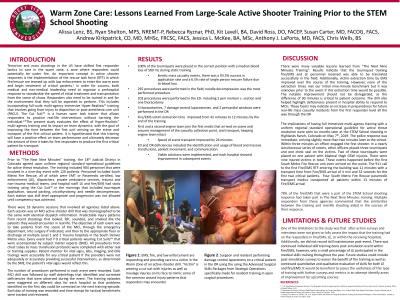General Surgery
Warm Zone Care: Lessons Learned from the Large-Scale Active Shooter Training Prior to the STEM School Shooting

Methods or Case Description:
910 including dispatchers, law enforcement, firefighters, paramedics, and hospitals trained in 18 events at 3 churches and Schools The active shooter drill was then initiated at the point of injury with 7 injured simulated patients all wearing a “CUT-Suit” simulation. Evaluation was from point of injury to and including care in the Operating Room. Allowing evaluation of real time and system logistics.
Outcomes:
A total of 112 simulated patients received 480 medical procedures. Central to this exercise, law enforcement established a "WARM ZONE". EMS was able to move into the facility, locate casualties, extract the first victim within minutes and move them to a casualty collection point and transported to safety within nine minutes. Six months later “The Real” event happened at Stem School in Colorado. Nine students were out by 16 minutes. By comparison it was 47 minutes before the first fireman entered Columbine in 1999.
Conclusion: Strengths and weaknesses were identified among the participating groups, both pre-hospital and in-hospital care. These include what roles agencies play if a true event and specific timing in establishing areas such as the warm zone itself, casualty collection point, transportation and at the accepting hospitals themselves.

Alissa Lenz, BS
Medical Student
Rocky Vista University
Denver, CO, US
